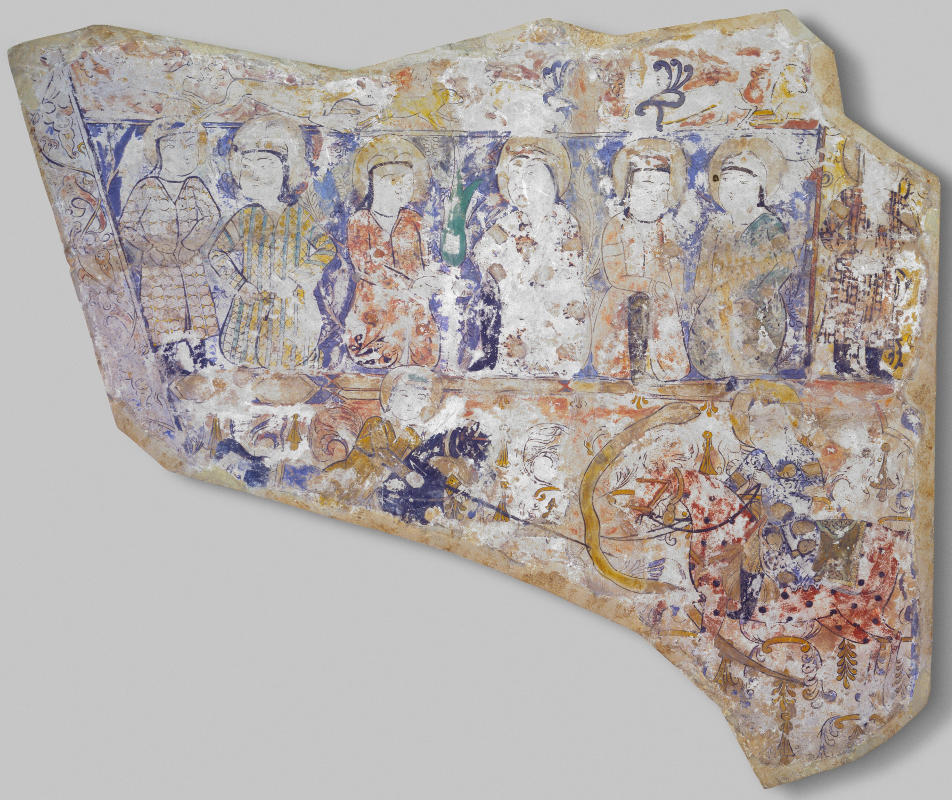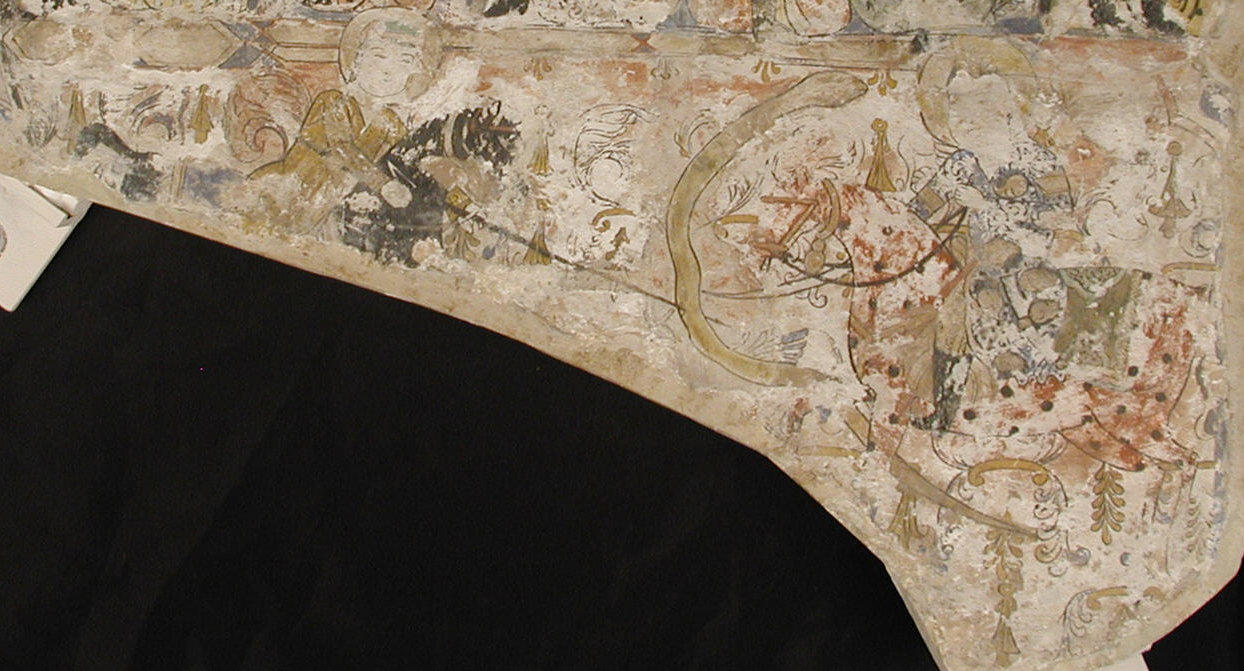|
|
Wall Painting of kneeling figures and two horsemen slaying a serpent, Iran, 20th century

A larger image of this Wall Painting of kneeling figures and two horsemen slaying a serpent. Metropolitan Museum of Art, New York, 52.20.1.
This work, once believed to be a rare example of pre-Mongol painting, was recently shown to have been made with pigments containing modern components. Remarkably, the forger seems to have worked on an arch fragment and chose images evocative of stories in the Shahnama (Book of Kings), including horsemen slaying a snake. No comparable miniature painting is known from archaeological contexts or extant buildings.
Elemental analysis by X-ray fluorescence spectroscopy (XRF) detected the following modern pigments: emerald green, produced since 1814; chrome yellow, synthetized in the early 19th century; white baryte, used as extender since the late 18th century, and zinc white, produced since the late 18th century.
Fragment of Wall Painting with a Scene of Two Horsemen Slaying a Serpent
Object Name: Wall painting fragment
Date: early 20th century
Geography: Attributed to Iran
Medium: Gypsum plaster; painted
Dimensions: H. 19 1/2 in. (49.5 cm)
W. 23 1/4 in. (59.1 cm)
Wt. 41 lbs. (18.6 kg)
Classification: Stucco
Provenance: Dikran G. Kelekian, New York (by 1938–d. 1951; his estate,New York, 1951–52; sold to MMA)
Accession Number: 52.20.1
Medieval texts report that wall paintings often decorated building interiors, and some examples have been excavated.
However, extant wall paintings from the Seljuq period are rare.
This fragment, probably from the spandrel of an arch, contains a row of standing and kneeling figures in the upper register and a scene of two horsemen slaying a serpent in the lower register.
Even more than mina'i ware pottery, it gives an impression of the little-known pre-Mongol painting style.
Metropolitan Museum of Art, New York
| |
Detail of Horsemen
|


